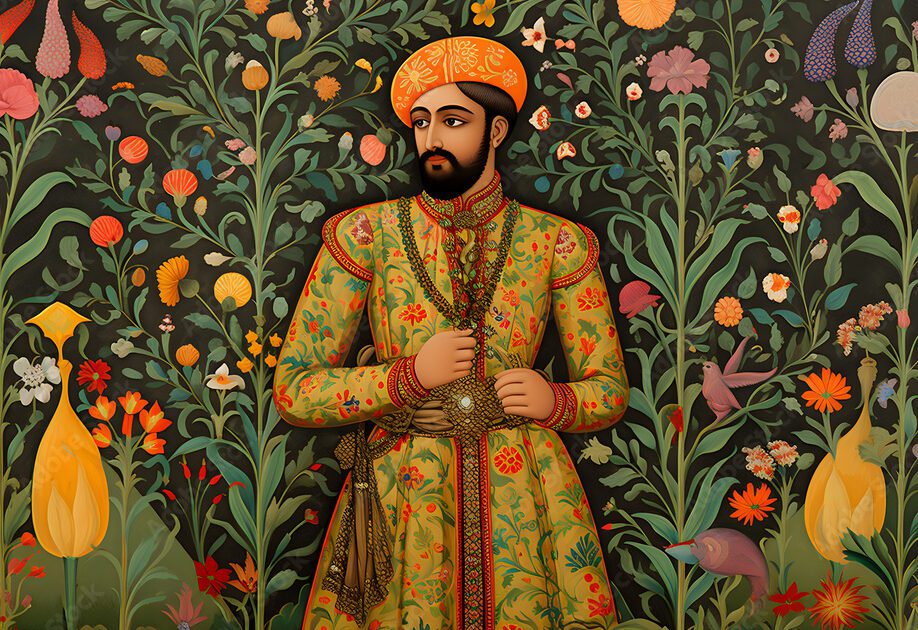India, a country with a history as rich and diverse as its cuisine, has been a melting pot of flavors for centuries. The culinary heritage of this land is a tapestry woven with threads of spices, traditions, and recipes passed down through generations. Join me on a flavorful journey as we explore the culinary tales from ancient India, where each dish tells a story of cultural evolution and culinary mastery.
The Spices of Time: A Glimpse into Ancient Flavors
In the heart of ancient India, spices were not merely ingredients; they were a currency of culture, a symbol of trade, and a source of culinary magic. As we delve into the past, we discover the spice routes that connected India to the world, bringing cinnamon from Sri Lanka, cardamom from the Western Ghats, and black pepper from the Malabar Coast.
A Pinch of History: The Spice Trade Routes
Imagine the bustling markets of the ancient port city of Muziris, where merchants from distant lands bartered for exotic spices. The intoxicating aroma of cinnamon and the pungent scent of black pepper filled the air, creating a sensory experience that transcended time.
Vedic Feasts: The Early Chapters of Indian Cuisine
The ancient Indian scriptures, particularly the Vedas, offer glimpses into the early culinary practices of the subcontinent. The emphasis on rituals and the sanctity of food laid the foundation for a cuisine deeply rooted in tradition and spirituality.
Soma, the Elixir of the Gods
In Vedic rituals, the sacred drink Soma played a central role. While its exact identity remains a mystery, it is believed to have been a concoction of herbs, possibly with hallucinogenic properties. The rituals around Soma laid the groundwork for the concept of food as a divine offering.
The Mauryan Feast: A Culinary Extravaganza
The Mauryan Empire, one of the earliest empires in ancient India, left behind culinary legacies that resonate even today. The Arthashastra, an ancient treatise on statecraft, provides insights into the grand feasts of the Mauryan era.
Feast Fit for a King
Picture the opulent Mauryan court, where delicacies like sukara-mamsa (pork curry) and different varieties of rice dishes adorned the royal tables. The meticulous planning of menus and the use of a wide array of spices showcased the culinary sophistication of the time.
Gupta Dynasty: Culinary Arts and Aesthetic Pleasures
The Gupta period marked a golden age in Indian history, and with it came a refinement of culinary arts. The concept of ‘rasa’ (flavor) gained prominence, emphasizing the balance of tastes to create a harmonious dining experience.
Susruta Samhita: The Culinary Healer
In this era, the Susruta Samhita, an ancient Sanskrit text on medicine and surgery, not only documented medical practices but also delved into the therapeutic properties of various foods. It highlighted the inseparable connection between food, health, and well-being.
The Sultanate and Mughal Influence: Fusion of Flavors
With the advent of the Delhi Sultanate and later the Mughal Empire, India witnessed a fusion of indigenous flavors with Central Asian culinary traditions. The royal kitchens became laboratories of culinary experimentation, giving birth to iconic dishes that define Indian cuisine.
Biryanis and Kebabs: The Mughal Legacy
Transport yourself to the Mughal courts, where skilled chefs crafted biryanis layered with fragrant spices and succulent kebabs cooked to perfection. The culinary influence of the Mughals forever transformed the landscape of Indian cuisine, creating a tapestry of flavors that transcends time.
The Spice Routes: Connecting Continents through Cuisine
As we navigate through history, we encounter the maritime spice routes that connected India to the Mediterranean, Southeast Asia, and beyond. Indian spices not only flavored local dishes but also traveled far and wide, leaving an indelible mark on global cuisines.
The Global Impact of Indian Spices
From the Persian-influenced garam masala to the Indonesian rendang, Indian spices embarked on a journey that influenced culinary traditions across continents. The exchange of flavors through trade routes shaped not only Indian cuisine but also the tastes of the world.
Conclusion: A Feast for the Ages
In every spice, every recipe, and every culinary tradition of ancient India, we find a story waiting to be told. The culinary tales from this era are more than just recipes; they are a testament to the cultural mosaic that defines the essence of Indian cuisine. As we savor the flavors of the past, we embark on a journey through time, appreciating the culinary artistry that has evolved and endured over centuries.
So, let us raise our metaphorical chalice, filled with the elixir of ancient flavors, and toast to the culinary heritage that continues to enchant and delight, making each meal a celebration of history, tradition, and the timeless art of Indian cooking.

